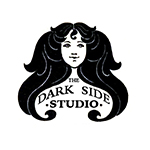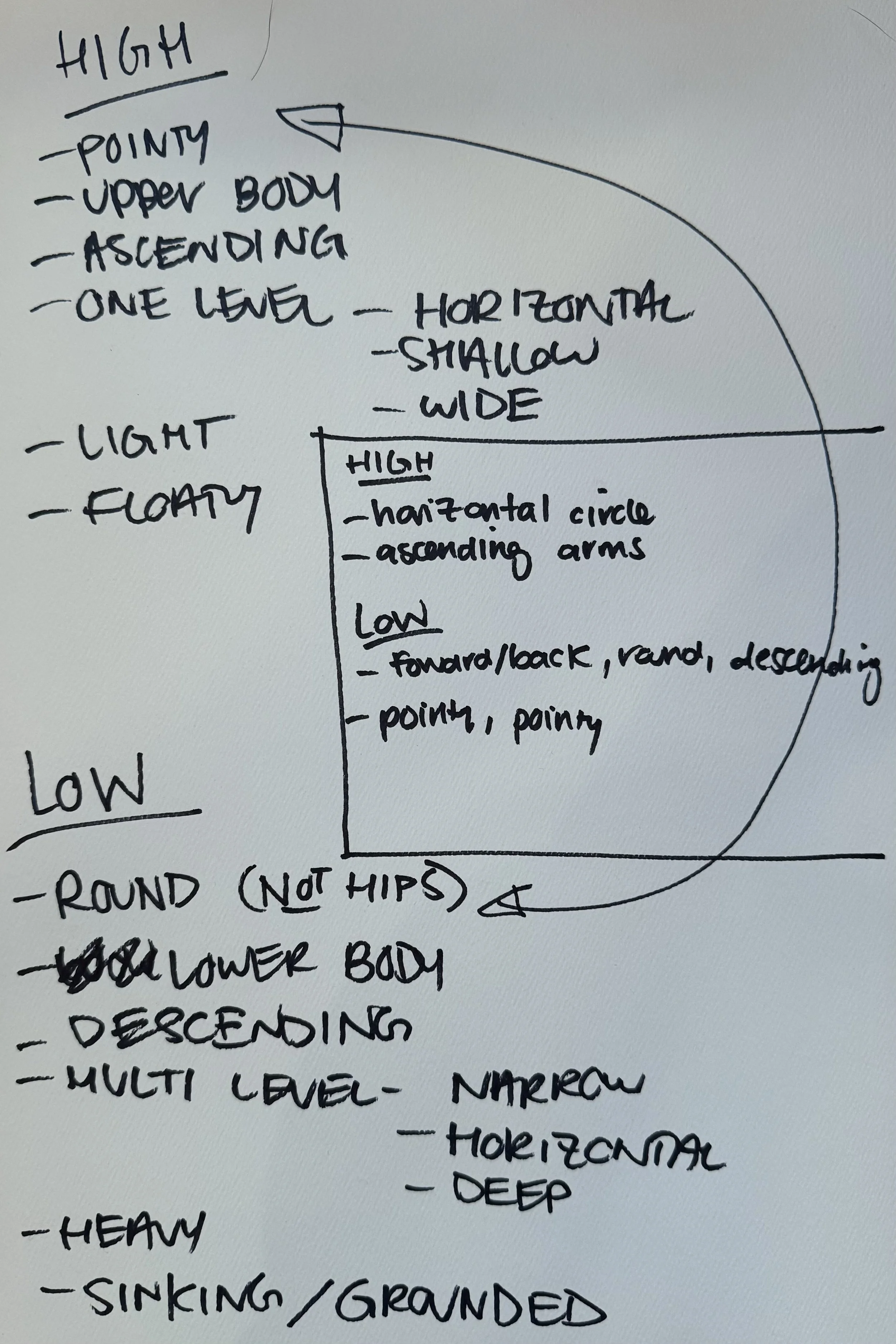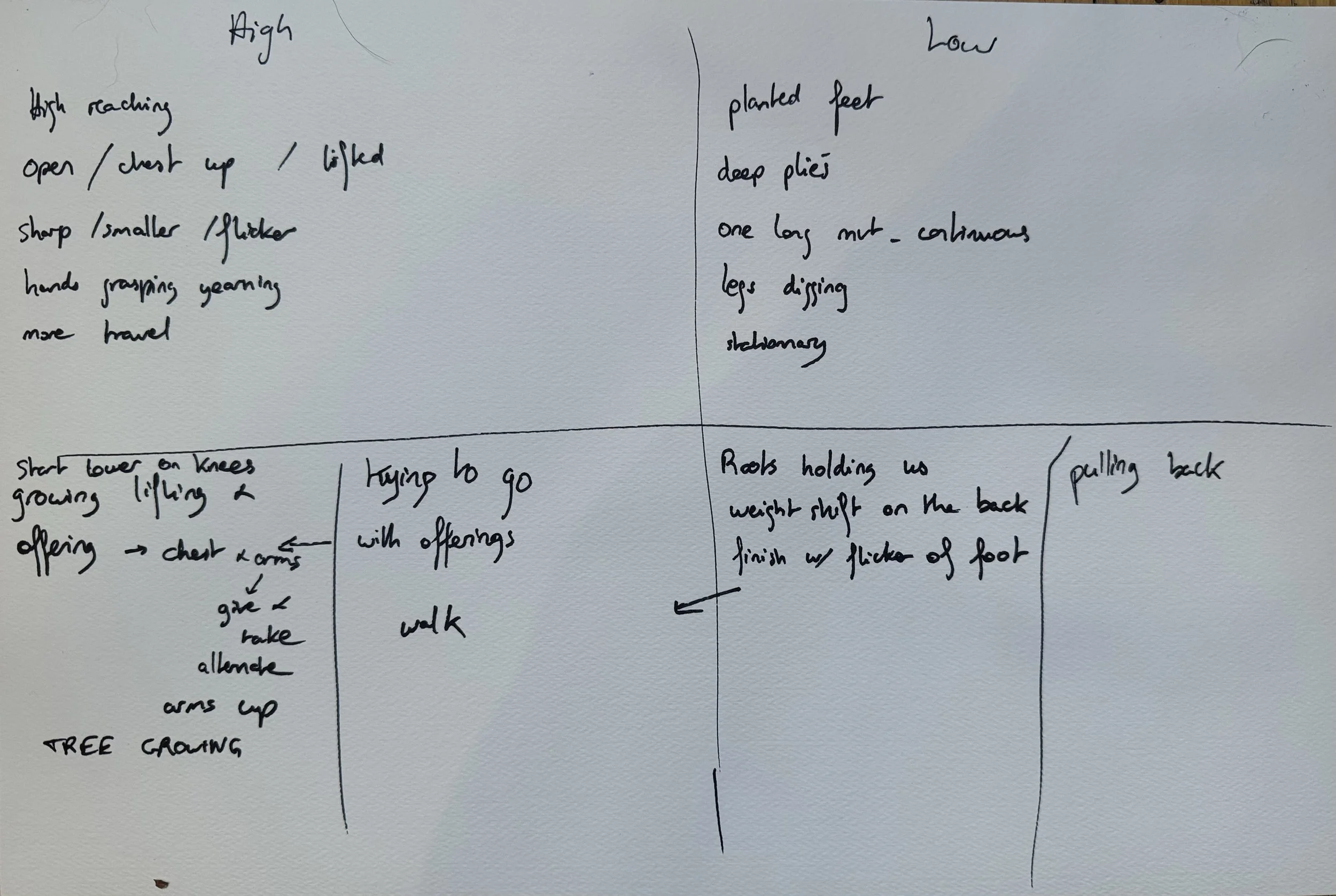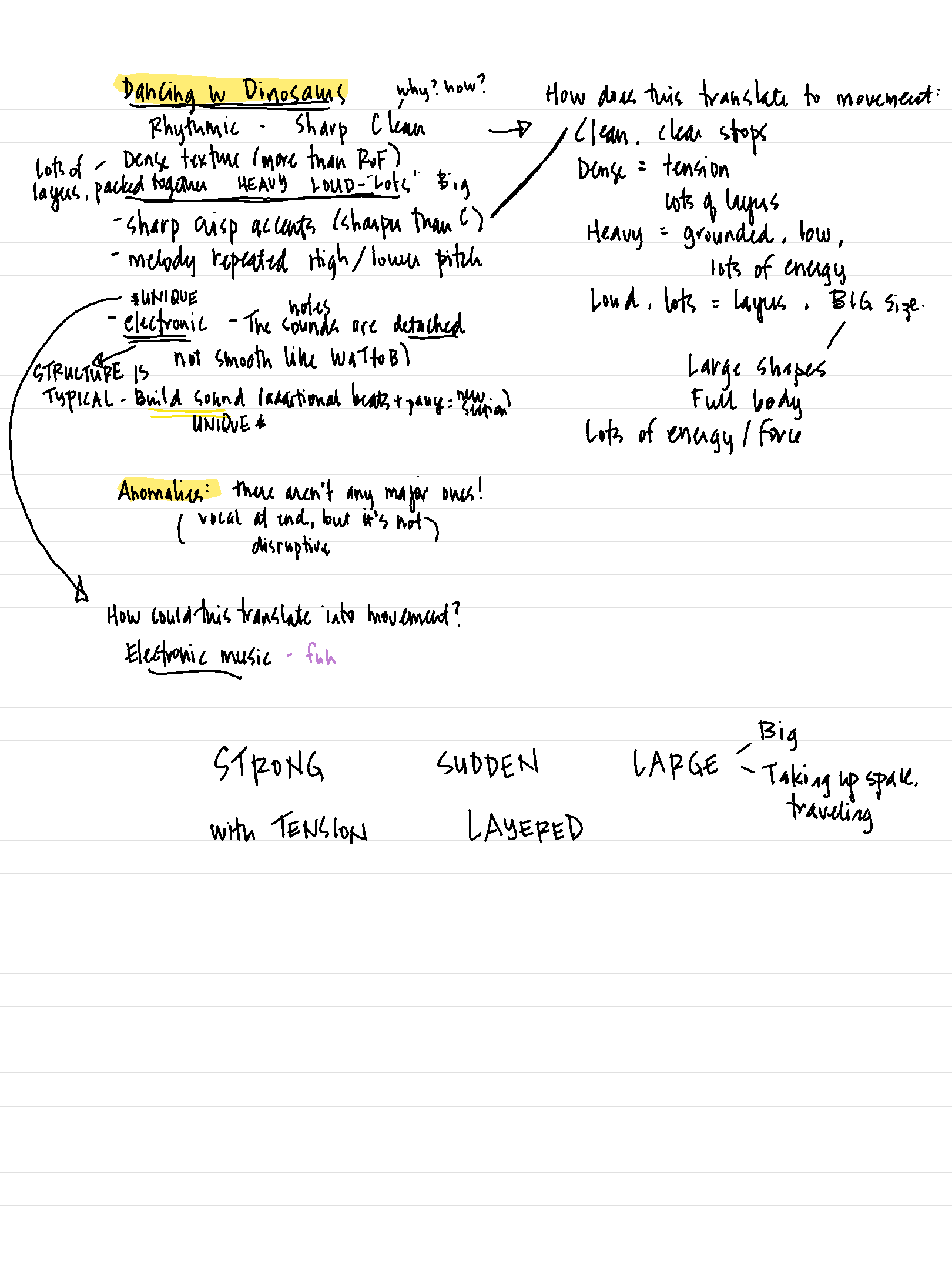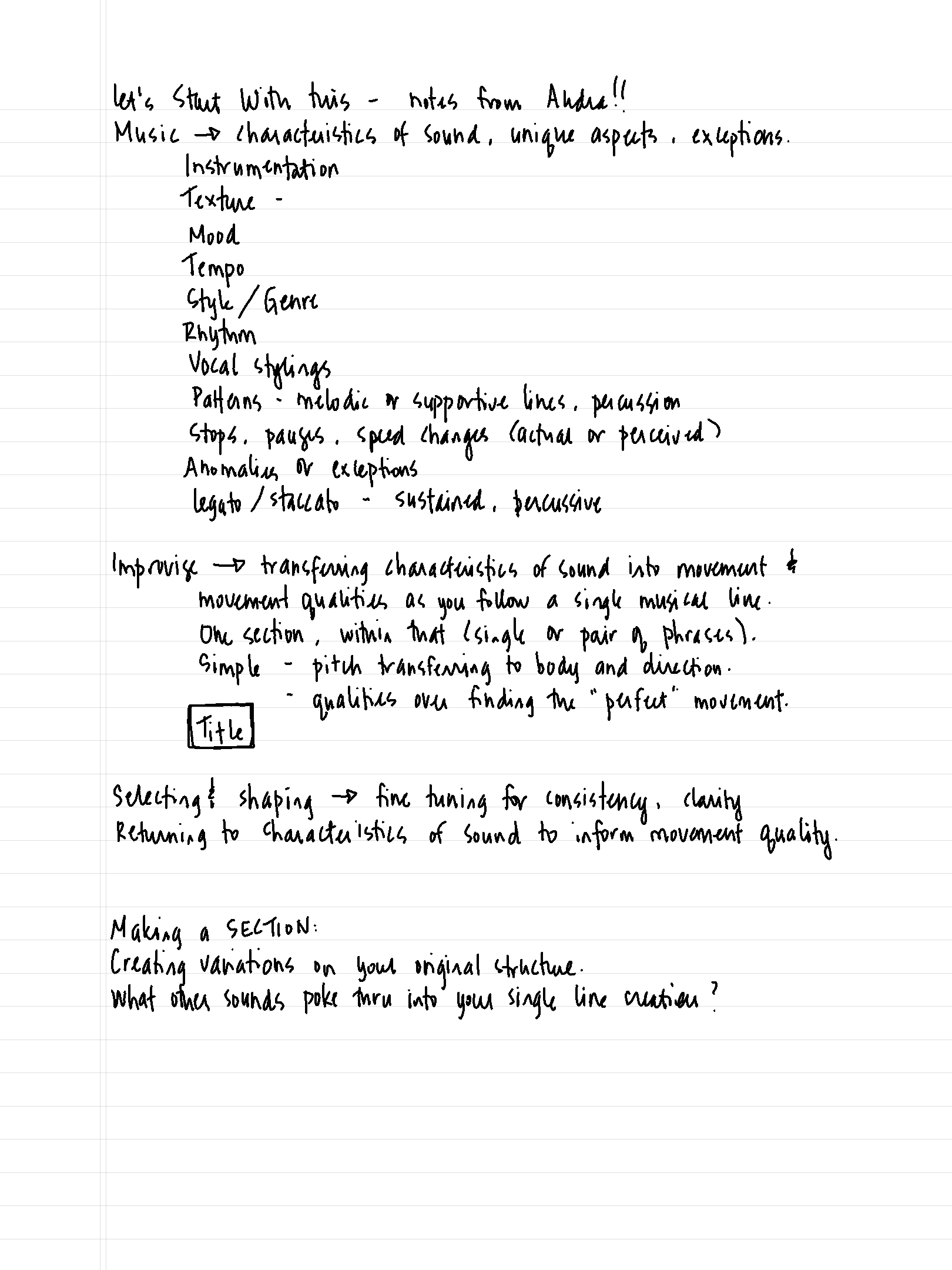Let’s Start with This
Workshop Notes
Sustained
Percussive
Swinging
Suspended
Collapsed
(Vibratory)
In addition to these movement qualities, I also find generally descriptive words helpful. Words that are helpful are ones that define how much or little energy I should use, how much time or space a movement takes up or maybe even suggest a position, or posture for the body. When using descriptive words, it can help to remember that some words are more helpful than others with regards to their application to movement.
For example, if I choose light to describe my movement quality, the movement could range from lightly dabbing some mascara from my perfectly applied eyeshadow (short, gentle dabs in one place) to being a dandelion fluff in the breeze (indirect, sustained movement that defies the pull of gravity).
For the workshop, we were specifically working with pairing or motivating our movement based on the quality of movement that the music was suggesting, so terms that describe the quality of sound are often helpful. The unique qualities of sound are called TIMBRE (pronounced Tam-ber). See more on Timbre at the bottom of the page.
Much of what we worked with was using ‘quality of movement’. That’s a phrase that is sometimes used in different ways, so I thought I’d elaborate on how I define and use it.
To me, ‘quality of movement’ or ‘movement quality’ describes HOW a movement, gesture or action (a ‘thing’ in the body - the WHAT) is done. Generally speaking, there are 5 (sometimes 6) different movement qualities in dance. They are:
My phrases for
Dancing with Dinosaurs
In addition to the section I taught, I actually had the section you worked with choreographed (some of it very rough). Here are 2 videos explaining a little of my process, what I heard, and finally what the choreography was for the first 2 phrases.
My movement for this section followed the shapes that the melody created, as well as reflecting the different qualities that the high and lower pitched phrases had.
A few runs of the combinations I created, and an explanation of how I developed my initial ideas reflecting the shape of the melodies.
Timbre
Timbre (pronounced TAM-ber) is the unique quality of sound that an instrument or voice has - the character, texture and colour of a sound. It is how one can tell the difference between a piano and a trumpet playing the same pitch, as well as one of the ways we can describe the difference between Bob Dylan’s voice (nasal and scratchy) and Cher’s voice (full and rich). Each instrument or voice has a different timbre, and the same instrument or voice can be played or used differently to create different timbres.
The timbre also includes the way the sound changes over time (the sound envelope or ADSR envelope which stands for Attack, Decay, Sustain, Release). For example, percussion instruments make most of their sound right at the start of a note, and then the sound quickly fades away. This is called attack and fade. Sustained instruments like a flute, horn, or violin start making a sound and keep making it, allowing them to create smoother, more fluid music. So the timbre of a percussive instrument is tends to be sharp and bright, as opposed to a violin which is often more soft and warm (depending, of course, on how it’s played!)
Timbre can also be called tone colour, tone quality or voice (regardless of whether or not the sound is from a person).
Timbre is a category for the features of sound that are not pitch, loudness, duration or spatial location.
Remember that describing timbre using emotional terms (excited, happy, sad etc) is a description of the interpretation or the effect of the sound, as opposed to describing the quality of the sound itself.
Timbre can be:
Bright/Dark
Brassy/Reedy
Shrill
Round
Piercing
Harsh
Noisy
Thin/Thick
Rich
Buzzy
Pure
Raspy
Mellow
Strained
Warm/Cold
Deep
Heavy/Light
Breathy
Vibrato
Silky
Clean/Distorted
Homework:
Using the format we used in the workshop (see image below), create some phrases or combinations (use whichever word makes you more comfortable) to a single section to one of these songs:
Won’t a Thing to Become by Colin Stetson and Sarah Neufeld
OR
Cold by Please Wait, Ta-Ku and matt mcwaters
These are songs 2 and 3 on the Spotify playlist (In Person Workshops 2025) at the top of this page.
(If you also took the Toronto Technique workshop on January 26, you ARE free to work with Cold.)
I didn’t talk about TITLING your combinations, but I find that helps to keep me focused on what the concept or theme of that section is. You don’t have to do this, but if you find it helpful, go for it!
